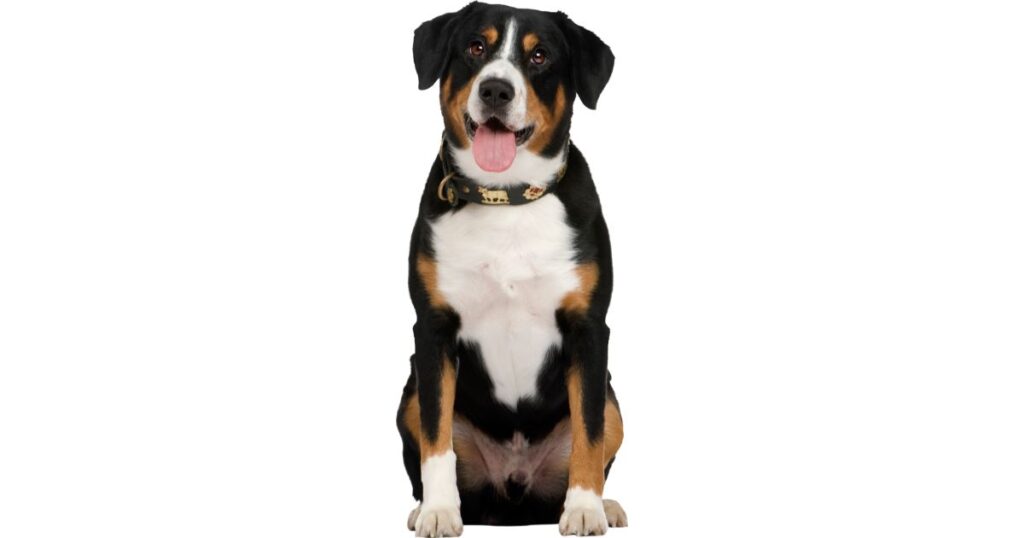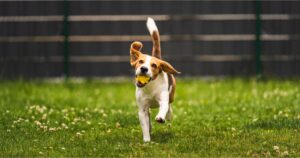Can dogs run through an invisible fence? This question might come to us when you are planning to purchase an invisible fence for your pup or have seen your neighbor’s dog fleeing his home despite having an invisible fence. Invisible fencing is a popular solution for a dog’s protection. It has gained its reputation based on its wide use. Secondly, it is considered an ideal solution for dog owners who want their dogs to roam around freely.
Key Takeaways
1: The invisible fence consists of a transmitter, dog collar, and boundary marks.
2: The fencing system is quite effective in keeping dogs within the boundary, but some dogs can still run through it.
3: By maintaining a close association with dogs and training them adequately, you can minimize the chances of escape. For further guidance, go through the below article.
So let’s Start!
I. How Invisible Fences Work
Table of Contents
ToggleThe world of the invisible fence is based on technology and innovation. An invisible fence system typically consists of three main components: a transmitter, a receiver collar, and boundary markers. The transmitter serves as the control center and is usually installed inside the house or garage. It generates a radio signal that defines the boundaries of the containment area.
The receiver collar is worn by your dog and contains specialized sensors. These can detect the radio signal emitted by the transmitter. As the dog approaches the established boundary, the receiver collar emits a warning signal, such as a beep or vibration, to alert the dog that it is nearing the edge of its designated area.
2. Can Dogs Run Through An Invisible Fence? Factors That Influence a Dog’s Behavior.
There could be many stimuli for dogs to escape, like a squirrel, a passing car, road lights, or the neighbor’s playful pup. You can’t stop these from happening. Remember that your dog is a social animal and gets attracted to events happening around him.
If you don’t engage your dog with fun activities or outdoor walks, then he might feel disconnected or bored. This boredom might trigger him to look outside the home for entertainment. Restlessness or excessive energy can also contribute to a dog’s desire to explore beyond the invisible fence
3. Invisible Fence Training Techniques
You should train your dog completely and in advance before introducing him to this fencing system. This involves understanding boundary marks and the significance of warning signals. Sometimes dogs are not comfortable wearing collars. Always check if the collar is not very tight around his neck and if he feels comfortable wearing it. Training is gradual, and patience is required! so bear it to get good results.
4. Common Issues and Solutions
What to Do When Your Dog Runs Through an Electric Fence
The dreaded scenario: your dog outsmarting the invisible barrier! Fear not, for we shall uncover actionable steps to reclaim your pup and reinforce the importance of respecting the invisible limits.
While invisible fences are effective for many dogs, it is essential to clarify a common misconception: invisible fences do not guarantee that a dog will be contained indefinitely. Invisible fences work based on conditioned learning, and individual dogs may react differently to the training and stimuli.
Retraining Dogs After a Breach
In the world of canine education, a breach doesn’t mean defeat. We’ll share tips on retraining your dog, helping them rediscover the dance steps of the invisible fence, and ensuring harmony and safety once more.
Seeking Professional Assistance
Sometimes, even the best dancers need a coach. Discover the benefits of reaching out to the invisible fence manufacturer for guidance, troubleshooting, and tips to enhance your dog’s fence etiquette.
5. Best Practices for Invisible Fence Success
Choosing the Right Invisible Fence
Selecting the perfect invisible fence for your dog is like choosing the right dance floor. We’ll explore different options, comparing their features and benefits, to ensure a perfect match for your pup’s unique needs.
Regular Maintenance and Monitoring
Just like a dance routine, invisible fences require practice and maintenance. We’ll share the importance of routine checks, ensuring the system is in top-notch condition to keep your furry friend safe and sound.
Effectiveness of Invisible Fence: Scientific Evidence
A study conducted by the American Veterinary Medical Association (AVMA) suggests that invisible fences can be effective when used in conjunction with proper training.
https://www.avma.org/
Incidence of Breaches:
According to a report by the International Association of Canine Professionals (IACP), while invisible fences can be successful, there’s a small percentage of dogs that may breach the boundaries, often due to factors like strong prey drive or lack of training.
https://iacpdogs.org/
Training Impact on Success:
A study published in the Journal of Applied Animal Welfare Science emphasizes the importance of consistent and positive reinforcement training for the success of invisible fence systems.
https://www.tandfonline.com/
Safety Considerations:
The American Humane Society provides guidelines on the safe use of invisible fences, highlighting the importance of proper training to ensure the well-being of dogs.
Longevity of Invisible Fence:
Invisible fences, when well-maintained, can have a lifespan of 10–15 years or more. This information is derived from industry insights and expert opinions.
Effect on Different Dog Sizes:
According to a report by the American Kennel Club (AKC), invisible fences can be suitable for dogs of various sizes, but their effectiveness may depend on factors like breed temperament and training consistency.
https://www.akc.org/

Conclusion
Invisible fences have emerged as a popular choice for dog owners seeking to strike a balance between providing their furry companions with outdoor freedom and ensuring their safety. However, whether dogs can run through an invisible fence has sparked curiosity and concern among pet owners.
Through a comprehensive exploration of the concept and mechanics of invisible fences, as well as understanding the motivations behind escaping behavior, we have gained valuable insights into this containment method.
While invisible fences can be effective for many dogs, it is crucial to acknowledge that they are not foolproof solutions. Each dog is unique, and factors such as temperament, breed, and training play vital roles in determining the fence’s effectiveness. It is essential to approach invisible fence usage with responsibility and consideration for our pets’ safety and well-being.

FAQs (Frequently Asked Questions)
Are invisible fences okay for dogs?
Absolutely! When used responsibly and with proper training, invisible fences provide a safe and effective way to keep dogs within designated boundaries.
Can a dog cross an invisible fence?
While it’s possible for a determined dog to breach an invisible fence, proper training and maintenance significantly reduce such instances.
What should you do if a dog keeps running through an invisible fence?
Reevaluate the training approach, consider professional assistance, and ensure the invisible fence is in good working condition.
Can a dog jump over an invisible fence?
Invisible fences are designed to deter jumping, but some dogs may still attempt it. Proper training helps discourage such behaviors.
How long does an invisible dog fence last?
The lifespan varies, but with regular maintenance, an invisible fence can last 10–15 years or more.
How deep are invisible dog fences?
The depth depends on the type of fence, but in-ground fences are typically installed a few inches below the surface.
Are invisible dog fences expensive?
The cost varies, but many find them cost-effective compared to traditional fencing options.
Are invisible fences good for large dogs?
Yes, invisible fences can be suitable for large dogs with proper training and appropriate adjustments to the system.
Does the invisible fence use GPS?
No, traditional invisible fences use radio signals emitted by a transmitter to create a designated boundary.








